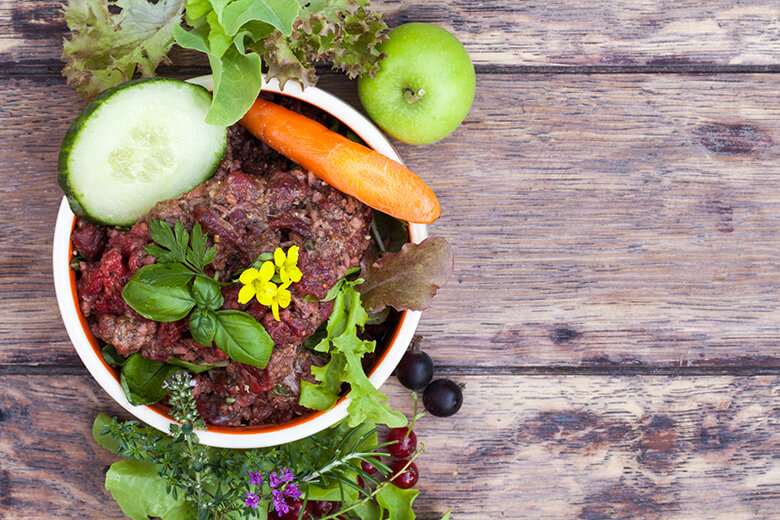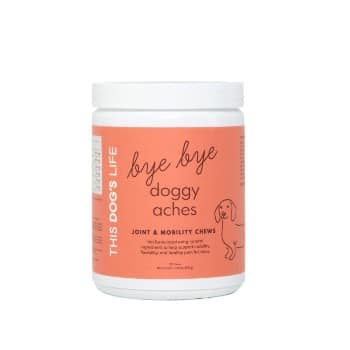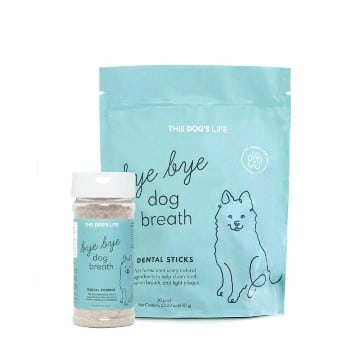With more dog parents concerned about transparency, quality and a healthy lifestyle for their dog, homemade cooking is on the rise.
By purchasing and combining the ingredients yourself, you know exactly what is going into the meal. Also, if your pet has specific protein intolerances, requires a special diet for a disease or condition or needs a low-fat diet, you can control the meals to address the issues at hand.
Plus, pets should have variations in their meals, just like humans and preparing food for your pets can cost less than buying “premium” pet foods.
As a holistic veterinarian, author (including my most recent cookbook for dogs Yin & Yang Nutrition for Dogs) and speaker known for healing dogs with whole foods and minimizing medications and chemicals, feeding a homemade diet is something I strongly encourage for dog parents, as many have reported decreased shedding, increased energy and better weight control by using home prepared meals.
Related: How to Keep Your Dog Safe From the Everyday Toxins Lurking Around Your House
But before you jump into cooking, here are a few pieces of advice to consider. While the tips below are great to begin cooking homemade dog food, I recommend consulting with a professional to ensure the diet is balanced.
Determining the right amount to feed your dog
Knowing how much of a home-cooked meal to feed your dog can be difficult for those just starting on the pet food journey. The rule of thumb is about 2 to 3 percent of body weight for adult dogs and cats. That translates to about 16 ounces of food for a 50-pound dog, or 4 ounces of food for a 10-pound cat. These are just starting points; you will need to adjust up or down based on whether your pet is gaining or losing weight.
Get the right kind of meat
Fat content in the meat you choose will also play a factor — the fattier the meat, the higher the calories per ounce of food. Chicken and pork are great, as they tend to be very lean, but if you want your base to be beef or another meat that can be fatty, stick with meats that are 90 percent lean or higher. Bacon, hot dogs, and other meats with nitrates should be avoided. It is best to make sure the meat – whatever option you choose – is organic, free of hormones and the animals are raised with care and compassion.
Understand the vegetable ratio
A general rule of thumb when choosing ingredients for dogs would be 40 percent meat, 30 percent vegetables and 30 percent grains. Some people choose not to feed grains to their dogs (including me), so meat and vegetable proportions would be closer to 60 percent meat (including about 10 percent for organs) and 40 percent vegetables. Of course, this is just a starting point. Some dogs will have different requirements.
For vegetables, aim for non-starchy types, like squash, green beans, broccoli and asparagus. Avoid potatoes (although sweet potatoes are okay occasionally) and starchy beans and legumes.
For grains, you need to be careful, as some dogs don’t tolerate them well. Quinoa is generally well tolerated, as well as buckwheat or barley.
Use organ meat for health issues
Organ meat should be included in home prepared diets, as organs such as liver, heart, gizzards and even kidneys and pancreas, provide vitamins, minerals and enzymes that are not found in muscle meat.
Like feeds like, so pets with heart disease should be fed hearts, those with liver disease should be fed liver and so on. (The amount of liver fed should not exceed 5 percent of the meal.)
Green tripe, which is the stomach of ruminants (cows, sheep, goats, deer) is a super-food packed with probiotic and digestive enzymes (although it smells pretty awful).
Dog parents tend to do about 10 percent organ meat, but may need to be adjusted. Organ meats can be found at butcher shops or through online sources.
Related: The Best Dog Travel Bags to Carry All Their Supplies
Other ingredients to consider
Eggs are packed with good protein and healthy fats and fat-soluble vitamins — A, D, E and K. They are also great as a calcium source. Dogs can be fed eggs daily, either raw or cooked. Sardines are an excellent source of omega 3 fatty acids, and generally canned sardines packed in water are easy to find and make a great addition to meals a few times a week.
Balance it out
Mistakes commonly made by pet owners wanting to prepare homemade meals include feeding the same recipe over and over with no variation and failing to balance the vitamin and mineral levels in the food. While not every meal must be complete and balanced, meals will need to achieve balance over time. Calcium will always be too low, as muscle meat is high in phosphorous and low in calcium. Pets fed low-calcium diets will develop osteoporosis. To avoid this look for calcium-rich foods, like ground eggshells or mineral mixes specifically made for home cooking. I recommend about 500 to 750 milligrams of calcium needed per pound of meat in the recipe.
Trace minerals are often overlooked but can easily be balanced by feeding kelp powder or mussels. Mussels are available in the frozen seafood section of most grocery stores or consider getting a supplement. Six to seven mussels per week will supply the required trace minerals.
Vitamin D needs to be supplied in the form of eggs or fish; otherwise a vitamin D3 supplement made specifically for home cooking should be added. Vitamin E can be supplied by feeding ¼ teaspoon wheat germ oil or one 100 IU vitamin E capsule per 30 pounds body weight per day.
You can also add omega 3 fatty acids in the form of fish oils. Fish oil goes rancid very easily, so make sure the oil you are using is odorless. It should also not be stored as a liquid in a plastic bottle. Liquid fish oil should be in a pump bottle that is not exposed to air. A good brand is Iceland Pure. I would recommend against flax oil. It is high in omega 6’s, not omega 3’s and dogs do not convert omega 6 to omega 3 very well.
For complete products to add to your dog’s diet, Dr. Dobias’ Green Min and Soul Food and Rx Vitamins’ Essentials for Dogs are great options.
Ease into it
When starting out, it’s best to make food as a “topper,” adding to your pet’s regular diet, gradually increasing the new diet while decreasing the processed food.
The addition of whole food diets will increase palatability and have incredible health benefits.
Related: The Ultimate Weight Loss Guide for Your Dog






















